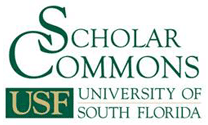Home > Open Access Journals > JSS > Vol. 17 > No. 1 (2024)
Author Biography
Borislav Bankov is a Ph.D. student in Political Science at Sofia University “St. Kliment Ohridski“ and an expert at the Big Data for Smart Society (GATE) Institute, where he is responsible for GATE’s role as a NATO test center for emerging dual-purpose technologies. Prior to GATE, he worked at the Emerging Security Challenges Division at the NATO HQ, the Office of the NATO Secretary General, and Europol’s Capabilities Directorate. Borislav holds an M.S. in Public Policy from University College London and a B.A. in European studies from Maastricht University. His Ph.D. research examines the role of hybrid warfare in the relationship between the European Union and NATO.
DOI
https://doi.org/10.5038/1944-0472.17.1.2118
Subject Area Keywords
Asymmetric warfare, Conflict studies, Irregular warfare, Military affairs, Security studies, War studies
Abstract
Hybrid warfare (HW) is one of the most debated concepts in contemporary military science. While most scholars agree that HW is conducted in the gray-zone between war and peace, they define the phenomenon differently. This disagreement has resulted in a conceptual gray-zone. The lack of theoretical clarity is exacerbated by the fact that authors have coined additional security and defense concepts that are based on the idea of hybridity, such as hybrid peace and hybrid influence. This article examines the different views on HW and aims to offer a more precise framework for its analysis. To fulfill its objective, it addresses five questions: What makes HW “hybrid”? Which acts of aggression could not be categorized as HW? Is HW “warfare”? Is HW a new phenomenon? Why is HW so contested? The author argues that, due to conflicting opinions and various concepts linked to HW, scholars and policymakers must always clearly define the concept when using it. Without proper definition, the concept of HW can be misunderstood and has limited academic value. Thus, this article also starts a mapping exercise of the concepts in security and defense based on the idea of hybridity. Such mapping is almost non-existent at the moment.
Acknowledgements
I would like to thank my Ph.D. supervisor, Iskren Ivanov, for his guidance in the editing process. I would also like to thank my reviewers for their efforts.
Recommended Citation
Bankov, Borislav. "Hybrid Warfare: How to Escape the Conceptual Gray-Zone." Journal of Strategic Security 17, no. 1 (2024)
: 1-23.
DOI: https://doi.org/10.5038/1944-0472.17.1.2118
Available at:
https://digitalcommons.usf.edu/jss/vol17/iss1/1

